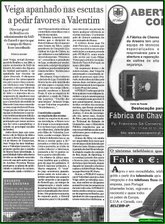Portuguese creoles are creole languages which have been significantly influenced by Portuguese.
Portugal in the period of discoveries and colonization created a linguistic contact with native languages and people of the discovered lands and pidgins were formed. Until the 18th century, these Portuguese pidgins were used as a lingua franca in Asia and Africa. These creoles are spoken, mostly, by inter-racial communities (Portuguese people with natives).
Later, the Portuguese pidgins were expanded grammatically and lexically, as they became creole languages. Today, these languages are known as "Portuguese creoles". The Portuguese creoles or Portuguese-based creoles are the ones that have almost all lexical content bases on Portuguese, while grammatically they are very different.
According to the monogenetic theory of pidgins advanced by Hugo Schuchardt, many creoles have structural similarities because most of the pidgins and creoles of European base in the world derived from a version of the Mediterranean lingua franca relexified by the Portuguese. This "broken Portuguese" would be used by European sailors whenever they met new peoples. Items like the preposition na (meaning "in" and/or "on"; from identical Portuguese word for "in the", feminine singular; contraction of "em a") would be marks of this common origin. The monogenetic theory does not explain how the syntactic structure of many creoles could arise from a language that does not possess such a structure.
The Portuguese word for "creole" is crioulo, it derives from criar (to raise) and olo (house - a typical African house in the Portuguese African colonies). Since most of the African creole speakers had a Portuguese father and an African mother, they were raised (criados) by their African mother, not as slaves, in the olos, thus crioulos, and were servants in the house of their fathers. Thus the creole was left free to develop into a stable language. While the Africans were often deported to the Americas, the mixed raced were not. The African slaves were prohibited from speaking their own languages, which their masters did not understand. Instead, they were also instructed to speak a Portuguese pidgin.
In Portugal and the African Portuguese language countries, the word crioulo is often a synonym of "Cape Verdean", where the large majority of the population is of mixed race. The word crioulo for the language is only used for the Guinean Portuguese creoles. In these countries the word crioulo does not have the negative connotation it has in Brazil.
The oldest Portuguese-based creole are the so-called Crioulos of Upper Guinea, born around the Portuguese settlements along the northwest coast of Africa. Originally spoken on a wider area, they are presently reduced to the following branches:
Upper Guinea Crioulo (Kriol): lingua franca of Guinea-Bissau, also spoken in Casamance, Senegal and in Gambia.
Capeverdean Crioulo (Kriolu, Criol): a dialect continuum spoken on the islands of Cape Verde, with some decreolization.
Another group is spoken in the Gulf of Guinea, in São Tomé and Príncipe and Equatorial Guinea:
Angolar (Ngola, N'góla): in coastal areas of São Tomé Island.
Annobonese (Fá d'Ambô): in Annobón Island.
Forro: in São Tomé.
Principense (Lunguyê) (almost extinct): in Príncipe Island.
Many other Portuguese creoles probably existed in Africa, especially in the Congo region and former Portuguese feitorias in the Gulf of Guinea.
Portuguese pidgins still exist in Angola and Mozambique, uncreolized. A Portuguese pidgin, known as Simple Portuguese is still used as lingua franca between distinct Angolan tribes.
Portuguese Creoles are the mother tongue of Cape Verde (it also has a largest number of standard Portuguese speakers) and Guinea-Bissau's population.
Portuguese has contributed to many creole languages of the Americas, although its similarity with Spanish makes it difficult to separate the influence of the two languages. Most surviving creoles contain also influences from Dutch, English, French, and various African languages. They are:
Papiamento: spoken in Aruba, Bonaire and Curacao; Spanish/Portuguese (60%), Dutch (25%), African and Arawak (15%).
Saramaccan: spoken in Suriname; Portuguese, English, African (20%).
Cafundó: Spoken in southeast Brazil; Bantu, Portuguese.
Portuguese-based creoles existed in Brazil, for example in the settlements founded by escaped African slaves (Quilombos); but none has survived. There is a Portuguese dialect in Helvécia, South of Bahia that presents signs of an earlier decreolization.
Ancient Portuguese creoles originating from Africa are still preserved in the ritual songs of the Afro-Brazilian animist religions (Candomblé).
It has been conjectured that vernacular of Brazil (not the official and standard Brazilian Portuguese) resulted from decreolization of a creole based on Portuguese and native languages; but this is not a widely accepted view. Vernacular Brazilian Portuguese is continuous with European Portuguese, and in fact quite conservative in some aspects.[citation needed]
There are two French-based Caribbean creole languages spoken in Brazil, in the state of Amapá, Lanc-Patuá and Karipuna Creole, which were transplanted to the region in the 20th century.
They are poorly known, but the Portuguese influence on them is small (chiefly in the vocabulary).
The numerous Portuguese outposts in India and Sri Lanka gave rise to many Portuguese-based creole languages, of which only a few have survived to the present. The largest group were the Norteiro languages, spoken by the Norteiro people, the Christian Indo-Portuguese in the North Konkan. Those communities were centered around Baçaim, modern Vasai, which was then called the “Northern Court of Portuguese India” (in opposition to the "Southern Court" at Goa). The creole languages spoken in Baçaim, Salsete, Thana, Chevai, Mahim, Tecelaria, Dadar, Parel, Cavel, Bandora (modern Bandra), Gorai, Morol, Andheri, Versova, Malvan, Manori, Mazagão, and Chaul are now extinct. The only surviving Norteiro creoles are
Diu Indo-Portuguese (almost extinct): in Diu.
These surviving Norteiro creoles have suffered drastic changes in the last decades. Standard Portuguese re-influenced the creole of Daman in the mid-20th century.
The Creoles of the Coast of Coromandel, such as of Meliapor, Madras, Tuticorin, Cuddalore, Karikal, Pondicheri, Tranquebar, Manapar, and Negapatam, were already extinct by the 19th century. Their speakers (mostly the people of mixed Portuguese-Indian ancestry, known locally as Topasses) switched to English after the British takeover.
Most of the creoles of the coast of Malabar, namey those of Cananor, Tellicherry, Mahé, Cochin (modern Kerala), and Quilom) had become extinct by the 19th century. In Cananor and Tellicherry, some elderly people still spoke some creole in the 1980s. The only creole that is still spoken (by a few Christian families only) is
Vaipim Indo-Portuguese: in the Vaipim Island, near Kerala.
Christians, even in Calcutta, used Portuguese until 1811. A Portuguese Creole was still spoken in the early 20th century. Portuguese creoles were spoken in Bengal, such as at Balasore, Pipli, Chandernagore, Chittagong, Midnapore and Hugli.
Finally, a significant Portuguese-based creole flourished among the so-called Burgher and Kaffir communities of Sri Lanka:
The earliest Portuguese creole in the region probably arose in the 16th century in Malacca, Malaysia, as well as in the Moluccas. After the takeover of those places by the Dutch in the 17th century, many creole-speaking slaves were taken to other places in Indonesia and South Africa, leading to several creoles that survived until recent times:
The Portuguese were present in the island of Flores, Indonesia since the 16th century, mainly in Larantuka and Sikka; but the local creole language, if any, has not survived.
The Portuguese were present in Macau, China since the mid-16th century. A Portuguese creole developed there, first by interaction with the local Cantonese people, and later modified by influx of refugees from the Dutch takeover of Portuguese colonies in Indonesia.
































.jpg)







































.jpg)









0 comentários:
Enviar um comentário